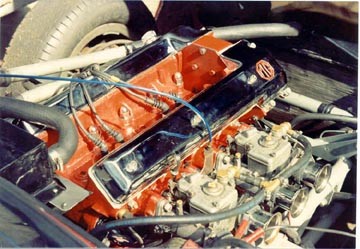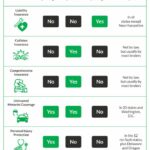For car enthusiasts seeking to amplify their engine’s power, forced induction systems like turbochargers and superchargers stand out as premier choices. While both deliver significant horsepower gains, their operational principles, performance characteristics, and suitability for different applications vary considerably. This article delves into a detailed comparison of Turbo Vs Supercharger systems, exploring their strengths and weaknesses to guide you in selecting the optimal boost solution for your vehicle.
Supercharger: Instant Power at a Price
Superchargers are mechanically driven compressors that are directly powered by the engine’s crankshaft, typically via a belt-drive system. This direct connection results in boost that is immediately available and directly proportional to engine speed.
How Superchargers Work
As the engine RPM increases, so does the speed of the supercharger, leading to a linear increase in boost pressure. This characteristic provides a very predictable and responsive power delivery, often described as “instant boost.” Superchargers are renowned for eliminating turbo lag, a common delay in power delivery experienced with turbochargers.
 Classic car, possibly an MGA, showcasing older automotive technology
Classic car, possibly an MGA, showcasing older automotive technology
Advantages of Superchargers
- Instantaneous Boost Response: The direct mechanical linkage ensures immediate power delivery as soon as you press the accelerator.
- Linear Power Delivery: Boost increases steadily with RPM, offering a predictable and controllable power curve.
- Simpler Installation (Generally): Supercharger kits can sometimes be easier to install compared to turbo kits, especially in certain engine configurations.
Disadvantages of Superchargers
- Parasitic Power Loss: Because they are mechanically driven, superchargers draw power directly from the engine to operate. This parasitic loss reduces overall engine efficiency and can slightly diminish fuel economy.
- Heat Generation: Superchargers can generate significant heat under sustained boost, potentially requiring additional cooling solutions.
- Boost Limited by Engine Speed: Maximum boost is directly tied to engine RPM, limiting potential gains at higher RPMs compared to well-matched turbo systems.
Turbocharger: Efficiency and High-End Power
Turbochargers utilize exhaust gas energy to drive a turbine, which in turn spins a compressor to force more air into the engine. This ingenious use of otherwise wasted energy makes turbochargers inherently more efficient than superchargers.
How Turbochargers Work
Exhaust gases exiting the engine spin the turbine wheel, which is connected by a shaft to the compressor wheel. As the turbine spins faster with increased exhaust flow, the compressor forces more air into the intake manifold, generating boost. Turbochargers are known for their ability to deliver significant power gains, especially at higher RPMs once they “spool up.”
Advantages of Turbochargers
- Enhanced Fuel Efficiency: By harnessing exhaust energy, turbochargers reduce parasitic losses and can improve fuel economy, especially during off-boost cruising.
- Higher Potential Power Gains: Turbochargers can achieve higher boost pressures and deliver more significant power increases, particularly in the mid to upper RPM ranges.
- Wastegate Control: Turbochargers utilize wastegates to regulate maximum boost pressure, preventing over-boosting and engine damage. Wastegates also bypass excess exhaust flow when boost isn’t needed, further improving efficiency.
- Torque Multiplication: Turbochargers are exceptionally effective at increasing low-end and mid-range torque, resulting in enhanced responsiveness and acceleration across the RPM band.
Disadvantages of Turbochargers
- Turbo Lag: A noticeable delay between throttle input and boost delivery can occur as the turbocharger needs time to spool up to speed. Modern turbo designs and anti-lag systems mitigate this effect, but it can still be present.
- More Complex Installation: Turbocharger systems often involve more intricate plumbing for oil and coolant lines, as well as exhaust modifications, potentially making installation more complex.
- Heat Management: Turbochargers operate at very high temperatures due to their proximity to the exhaust stream, necessitating effective heat shielding and potentially intercooling to manage intake air temperatures.
Turbo vs Supercharger: Performance Dynamics
When directly comparing turbo vs supercharger performance, key differences emerge in boost delivery and power curves. Superchargers offer immediate, linear boost, providing a consistent power increase across the RPM range. This translates to predictable throttle response and a “muscle car” feel.
Turbochargers, conversely, exhibit a boost curve that rises sharply as they spool up, typically reaching peak boost at mid-range RPMs and maintaining it through the upper end. This characteristic results in a surge of power once the turbo is spooled, often providing greater peak torque and horsepower figures compared to similarly sized superchargers.
In essence, superchargers deliver readily available power from the moment you accelerate, while turbochargers provide a more dramatic power surge once they reach their optimal operating range.
Why Aren’t Turbo Kits More Common for Classic Engines?
Despite the clear advantages of turbochargers in terms of efficiency and peak power, supercharger kits have historically been more prevalent, particularly for older engines like the MGB engine mentioned in the original article. The primary reason for this disparity isn’t technical superiority, but rather market demand and development costs.
Developing a comprehensive, reliable, and user-friendly turbo kit requires significant engineering investment in manifold design, tuning, and ensuring compatibility with existing engine components. Manufacturers often prioritize developing supercharger kits because they can sometimes be simpler to engineer for certain engine types and cater to a market segment seeking readily available, linear power gains with a less complex installation process.
However, as technology advances and the demand for efficient performance increases, the appeal of turbocharger systems continues to grow. The potential for turbocharging classic engines like the MGB to unlock even greater performance than supercharger kits offer remains a compelling prospect. Perhaps it’s only a matter of time before a well-engineered, readily available turbo kit emerges to revolutionize the performance enhancement landscape for these iconic vehicles.
By understanding the nuances of turbo vs supercharger systems, car enthusiasts can make informed decisions to achieve their desired performance goals, whether it’s instant responsiveness or maximum power output. Both forced induction methods offer exhilarating upgrades, and the “best” choice ultimately depends on individual preferences, vehicle application, and performance objectives.
